Flatworm
Phylum Platyhelminthes (Class Turbellaria)
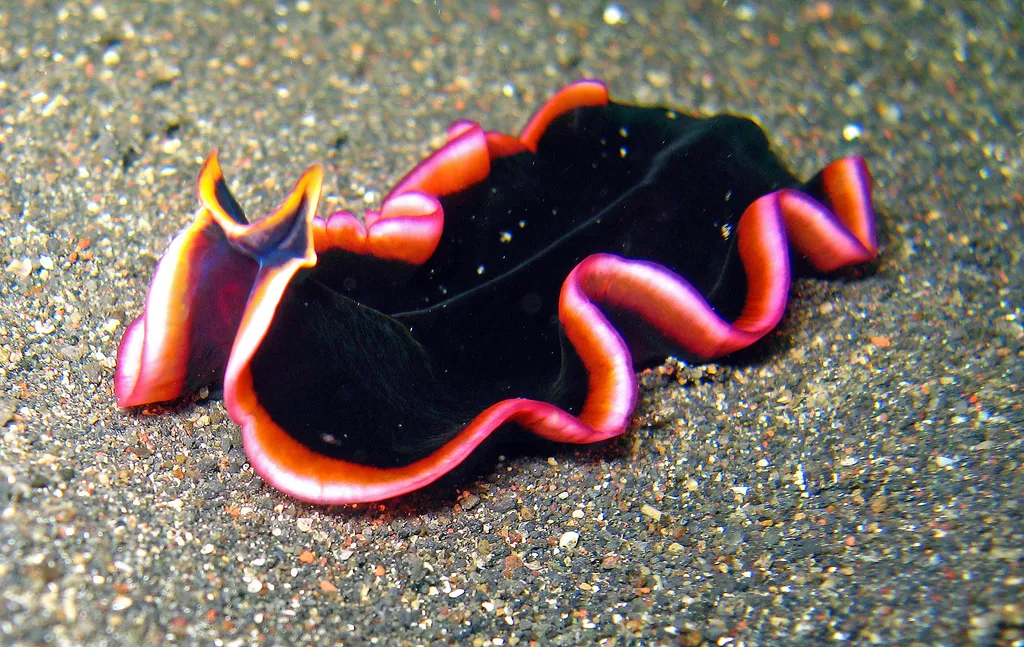
Photo by Jens Petersen / CC BY-SA 3.0 via Wikimedia Commons
Marine Flatworms are the "Magic Carpets" of the reef. Often mistaken for nudibranchs due to their dazzling colors, they are actually much simpler organisms—basically a 2D sheet of life with no heart, no lungs, and a single opening for both eating and pooping. Despite their simplicity, they are famous for their graceful, undulating swimming style (like a flamenco dancer's skirt) and their bizarre mating ritual known as "penis fencing."
🔬Classification
📏Physical Features
🌊Habitat Info
⚠️Safety & Conservation
Identification Guide
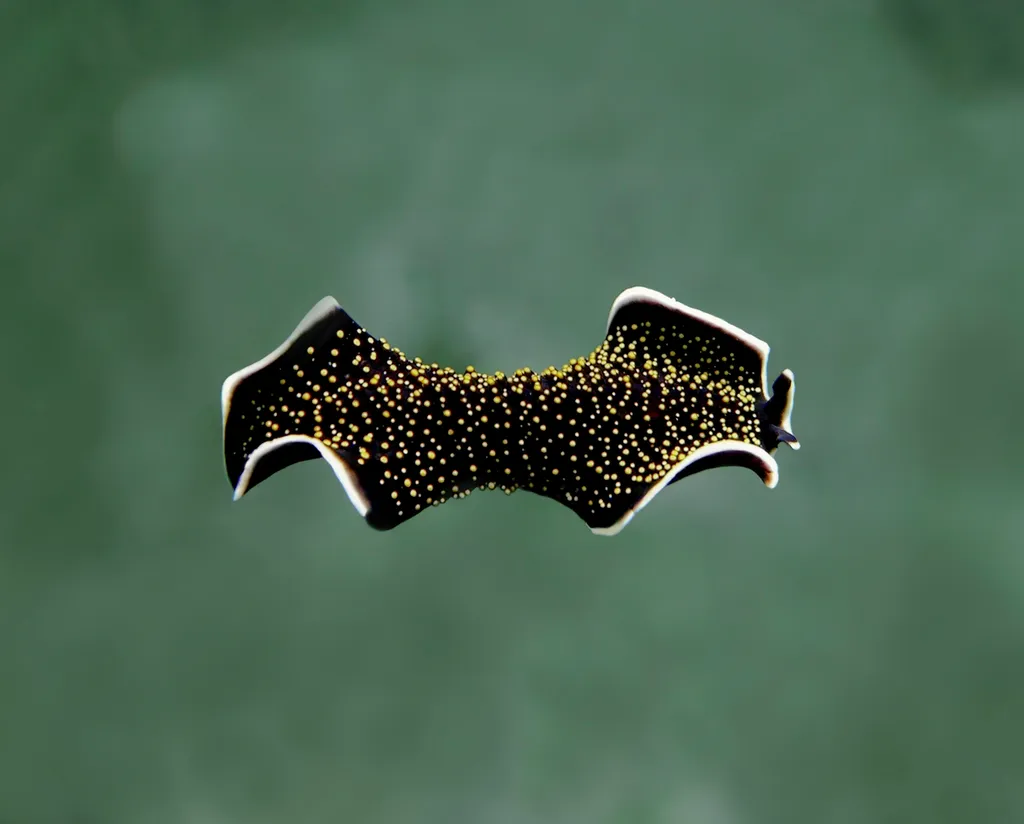
Photo by Betty Wills / CC BY-SA 4.0 via Wikimedia Commons
Field marks:
- Thickness: Paper-thin! If it looks 3D and fleshy, it's a nudibranch. If it looks like a sticker, it's a flatworm.
- Movement: Glides smoothly or swims by undulating the edges of its body (the "skirt").
- Head: No visible gills on the back. Instead of distinct rhinophores (tentacles), they have folded front edges (pseudotentacles).
- Texture: Smooth and slippery, never bumpy or warty.
Differences from Nudibranchs
- Gills: Nudibranchs usually have a flower-like gill plume on their butt. Flatworms have smooth backs.
- Tentacles: Nudibranchs have distinct rhinophores (antennae). Flatworms have folded ear-like flaps.
- Body: Nudibranchs are thick/chunky. Flatworms are wafer-thin.
Juvenile vs. Adult
Juveniles are tiny replicas of adults. Some species can regenerate from a severed piece, so a "juvenile" might just be a regrowing fragment!
Top 10 Fun Facts about Flatworm
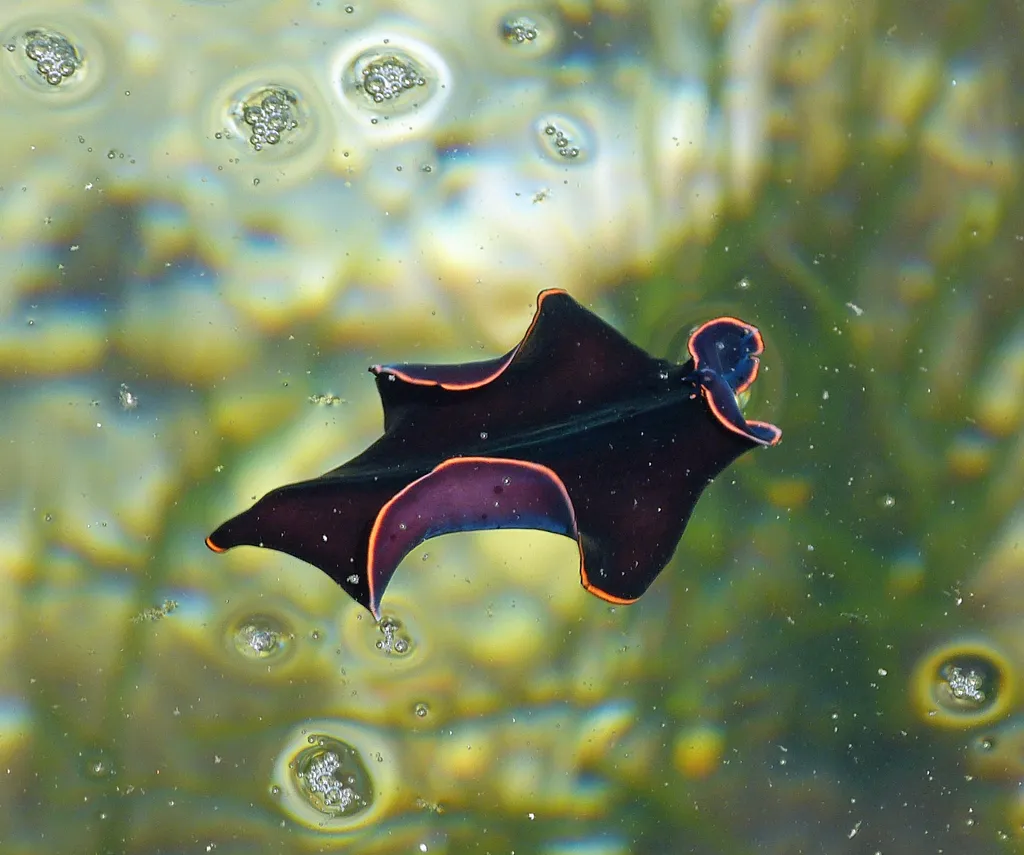
Photo by Andrea Bonifazi / CC BY-SA 4.0 via Wikimedia Commons
1. Penis Fencing
Flatworms are hermaphrodites (both male and female). When two meet to mate, they engage in a violent duel called "penis fencing". They rear up and try to stab each other with their double-barbed penises. The winner injects sperm and becomes the "father" (swimming away carefree), while the loser gets stabbed, absorbs the sperm, and bears the energy cost of motherhood.
2. 2D Life
They are incredibly simple: no heart, no lungs, no blood vessels. They breathe by diffusion—oxygen just soaks directly through their super-thin skin. This is why they must stay flat; if they got too thick, their insides would suffocate.
3. The "Magic Carpet" Ride
While most crawl, some flatworms (like the Persian Carpet Flatworm) can swim. They lift off the bottom and ripple their body margins in mesmerizing waves, looking exactly like a flying magic carpet. It is one of the most graceful sights in the ocean.
4. Master Mimics
Many flatworms are Batesian mimics—they copy the colors of toxic nudibranchs to scare off predators. For example, the harmless flatworm Pseudoceros imitatus looks almost identical to the toxic nudibranch Phyllidiella pustulosa.
5. One Hole for Everything
They have a single opening on their underside that serves as both mouth and anus. They extend a tube-like pharynx to suck up juices from worms or crustaceans, and waste comes back out the same way. Efficient, but not polite.
6. Immortal Fragments?
Flatworms are famous for regeneration. If you cut some species in half, the head grows a new tail, and the tail grows a new head. You get two worms! (Please don't try this underwater).
7. Toxic Diet
Like pufferfish, some flatworms contain tetrodotoxin, a potent neurotoxin. They likely acquire this from bacteria or their diet, making them a deadly snack for any fish foolish enough to eat them.
8. Sticky Situation
They don't have feet. They glide on a layer of mucus (slime) secreted by their underside, propelled by millions of microscopic hairs called cilia. They are essentially surfing on their own snot.
9. Hunting Tactics
Despite being a wet tissue paper, they are predators. They hunt tiny crabs, worms, and snails. Some wrap their body around prey, digesting it externally with enzymes before slurping it up.
10. Eye Spots
They have simple eyespots (ocelli) that can detect light and dark, but they can't form images. If you shine a bright light on them, they often turn away, preferring the safety of the shadows.
Diving & Observation Notes
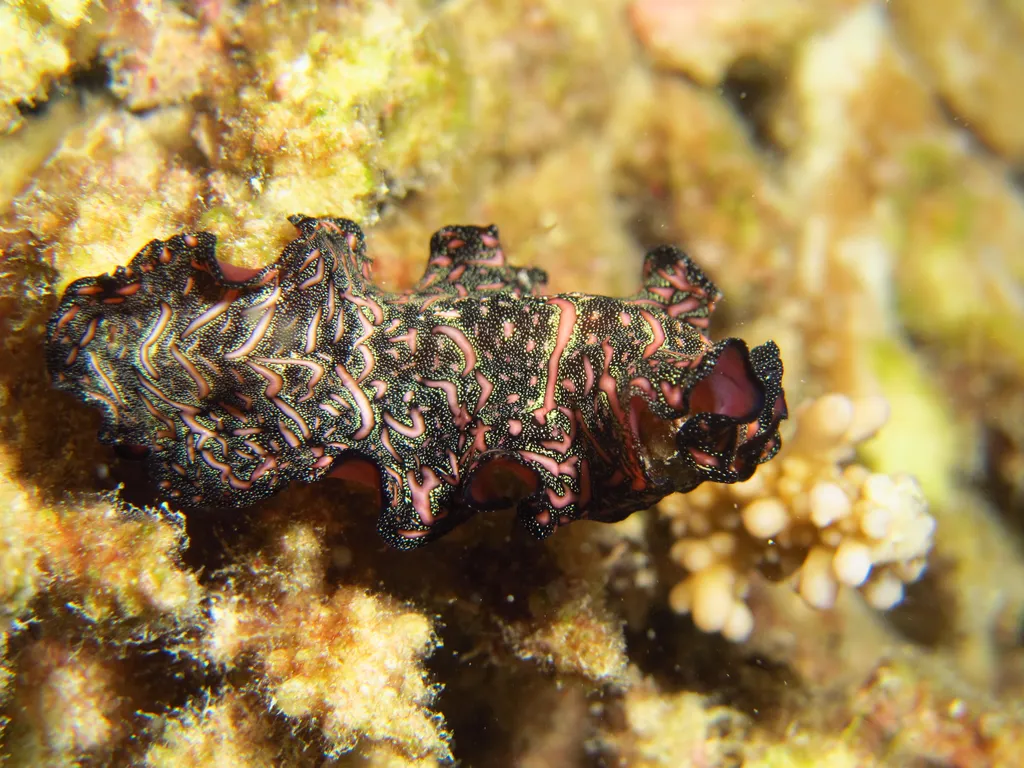
Photo by MDC Seamarc Maldives / CC BY-SA 4.0 via Wikimedia Commons
🧭 Finding Flatworms
Look for bright splashes of color on grey rubble or sponges. Check under ledges or in shady crevices during the day. If you see a "nudibranch" moving suspiciously fast, it's probably a flatworm.
🤿 Approach & Behavior
- Don't Touch: They are incredibly fragile. Touching them can tear their delicate bodies.
- Light: They are shy of bright lights. Use a red focus light or approach slowly.
- Swimming: If you are lucky, one might swim. Do not chase it. Just hover and watch the mesmerizing ripple.
📸 Photo Tips
- Top-Down: Since they are flat, a top-down shot works best to show their pattern.
- Eye Level: Getting low is hard because they are so flat, but if they rear up (to "sniff" or fence), that's the money shot.
- Focus: Focus on the pseudotentacles (the folded front edge).
- Video: Video is often better than photos to capture their gliding movement or swimming behavior.
⚠️ Ethics & Safety
- Fragile: Did I mention they tear easily? Even strong water displacement from a fin kick can hurt them.
- Mating: If you see two rearing up at each other, start recording. You are witnessing the rare "penis fencing" duel.
🌏 Local Guide Nuggets
- Lembeh/Anilao: Look for the "Persian Carpet Flatworm"—it's huge, beautiful, and a frequent swimmer.
- Red Sea: The "Gold-dotted Flatworm" is common on reefs but often mistaken for a nudibranch.
- General: Check ascidians (sea squirts). Many flatworms feed on them and lay eggs on them.
Best Places to Dive with Flatworm
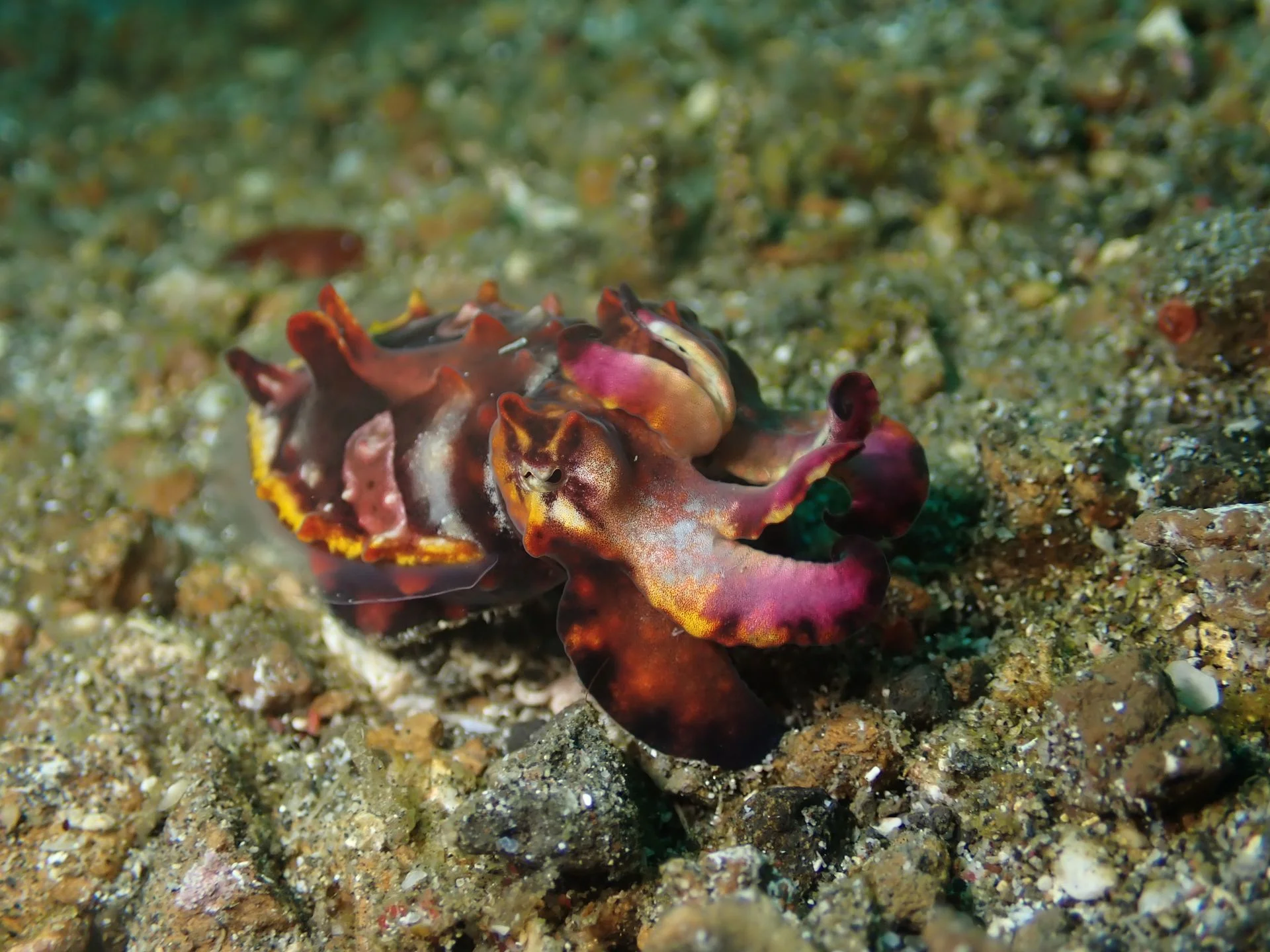
Lembeh
The Lembeh Strait in North Sulawesi has become famous as the muck‑diving capital of the world. At first glance its gently sloping seabed of black volcanic sand, rubble and discarded debris looks bleak. Look closer and it is teeming with weird and wonderful life: hairy and painted frogfish, flamboyant cuttlefish, mimic and blue‑ringed octopuses, ornate ghost pipefish, tiny seahorses, shrimp, crabs and a rainbow of nudibranchs. Most dives are shallow and calm with little current, making it an ideal playground for macro photographers. There are a few colourful reefs for a change of scenery, but Lembeh is all about searching the sand for critter treasures.
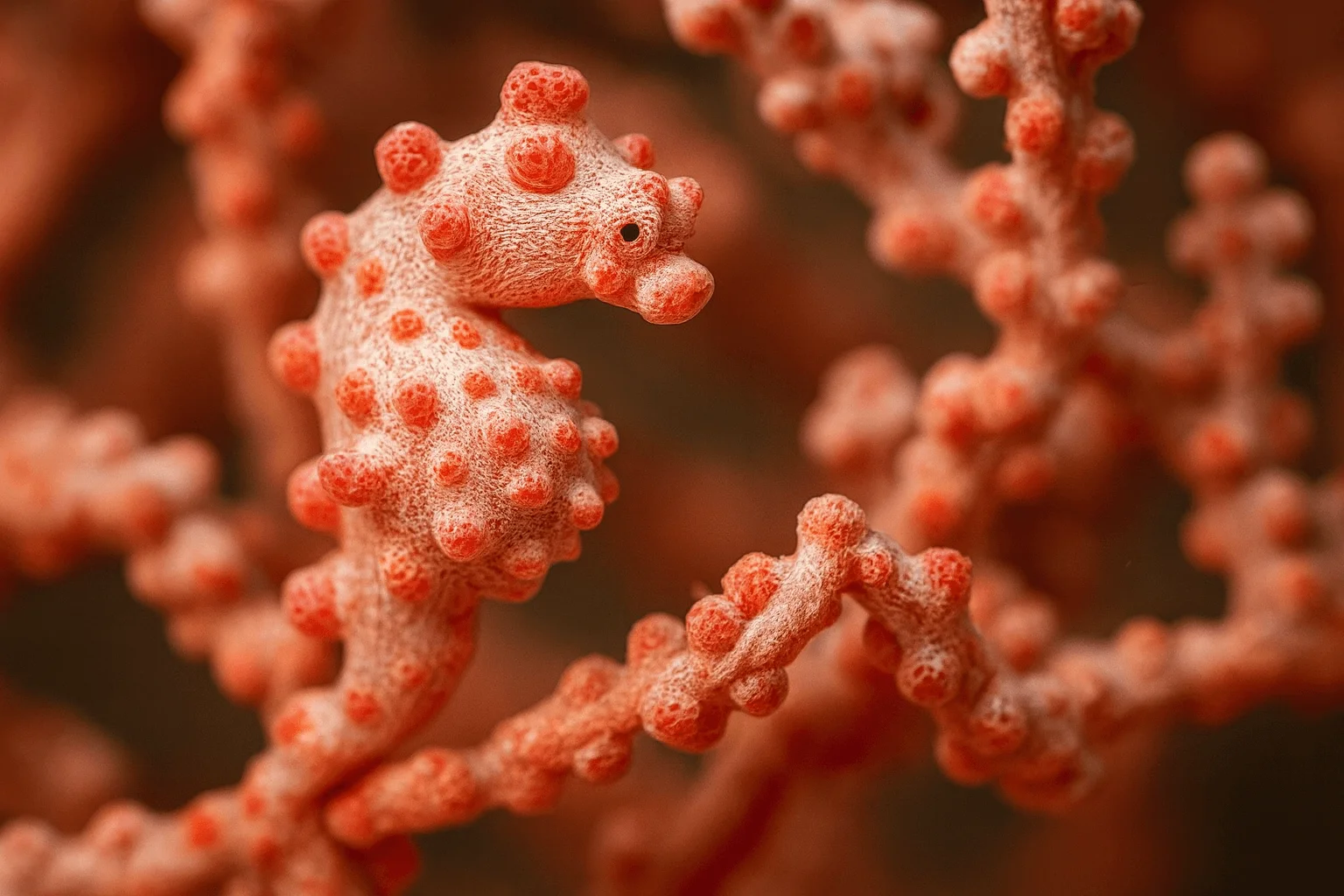
Anilao
Anilao, a small barangay in Batangas province just two hours south of Manila, is often called the macro capital of the Philippines. More than 50 dive sites fringe the coast and nearby islands, offering an intoxicating mix of coral‑covered pinnacles, muck slopes and blackwater encounters. Critter enthusiasts come for the legendary muck dives at Secret Bay and Anilao Pier, where mimic octopuses, blue‑ringed octopuses, wonderpus, seahorses, ghost pipefish, frogfish and dozens of nudibranch species lurk in the silt. Shallow reefs like Twin Rocks and Cathedral are covered in soft corals and teem with reef fish, while deeper sites such as Ligpo Island feature gorgonian‑covered walls and occasional drift. Because Anilao is so close to Manila and open year‑round, it’s the easiest place in the Philippines to squeeze in a quick diving getaway.
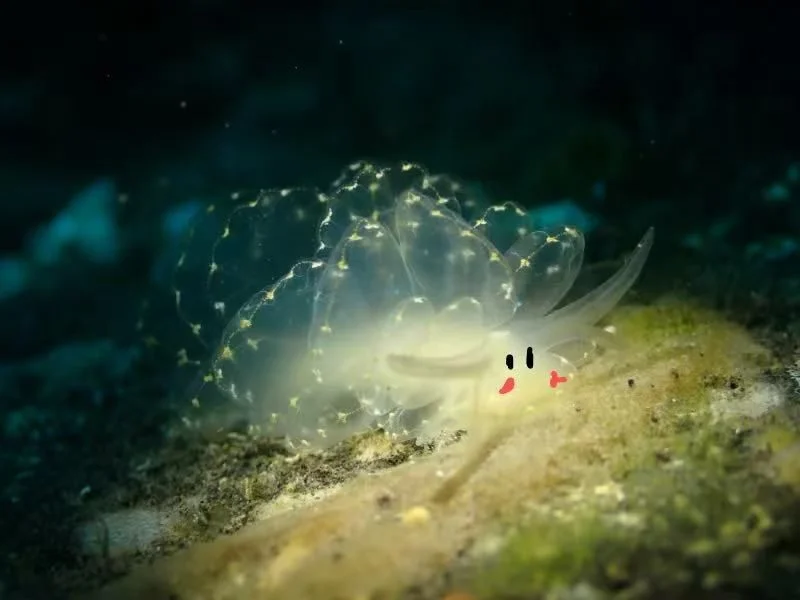
Tulamben(Bali)
Tulamben sits on Bali’s northeast coast and is best known for the USAT Liberty shipwreck – a 125‑metre cargo ship torpedoed in WWII that now lies just a short swim from shore. Warm water, mild currents and straightforward shore entries make diving here relaxed for all levels. Besides the wreck, divers can explore coral gardens, black‑sand muck sites and dramatic drop‑offs. Macro lovers will find nudibranchs, ghost pipefish, mimic octopus and pygmy seahorses, while big‑fish fans can encounter schooling jackfish, bumphead parrotfish and reef sharks. With a compact coastline packed with variety, Tulamben delivers world‑class wreck and critter diving without long boat rides.
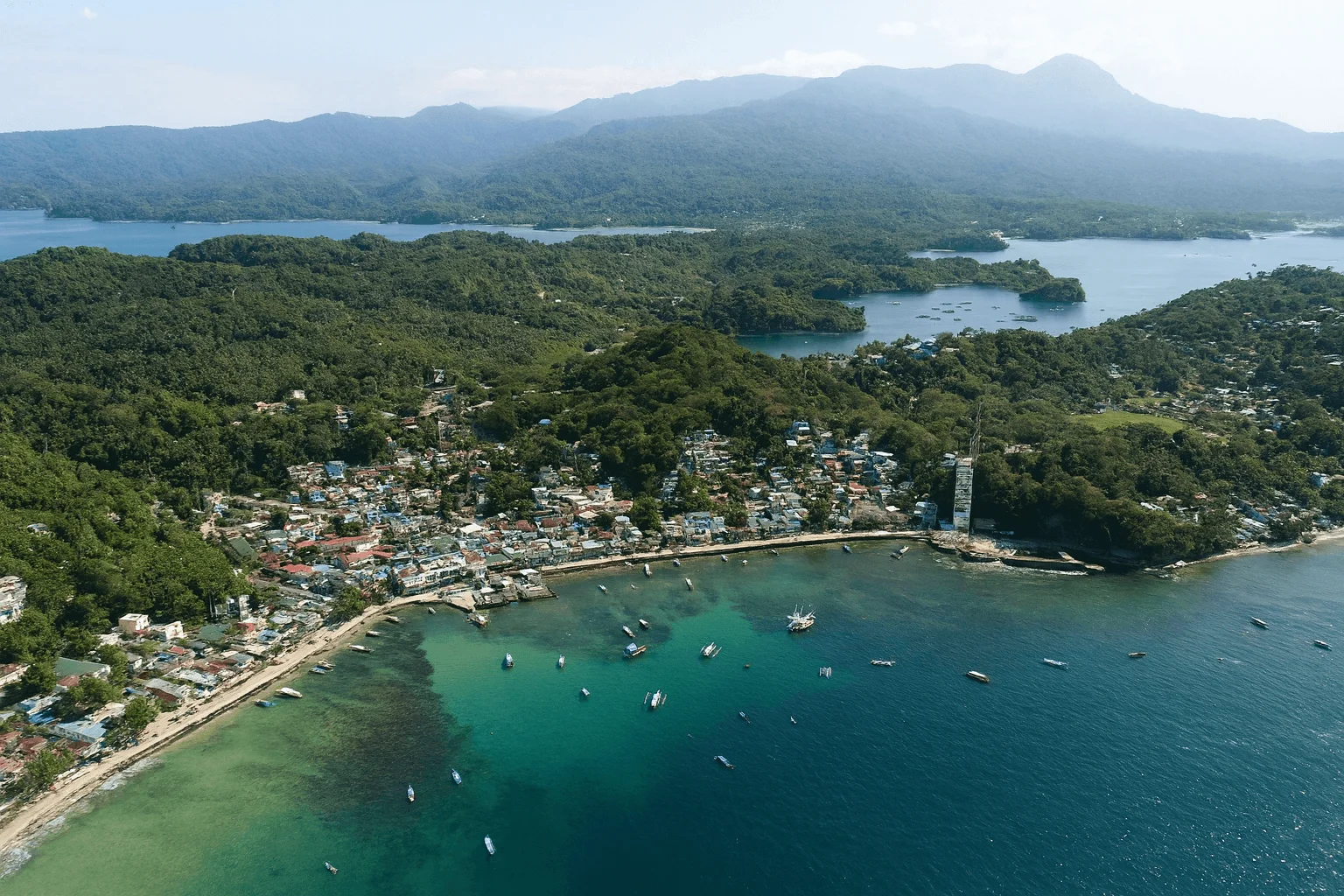
Puerto Galera
Puerto Galera sits on the northeast tip of Mindoro Island in the Philippines and has long been rated among Asia’s best and most diverse diving areas. The town faces the Verde Island Passage – part of the Coral Triangle – so its reefs host an incredible mix of hard and soft corals, seahorses, frogfish and other critters alongside schooling jacks and occasional pelagics. More than forty sites line the bays and headlands around Sabang and Small La Laguna, meaning everything from easy house‑reef dives and shallow muck sites to current‑swept canyons and colourful wrecks is only a short boat ride away. Currents are governed by the lunar cycle; strong spring tides around full and new moon create exciting drift dives, while neap tides offer gentle conditions that are perfect for macro photography. Because the water stays warm all year (27–30 °C) and visibility often reaches 15–30 m, Puerto Galera attracts both beginners and experienced divers seeking a fun, affordable destination with lively nightlife on land.